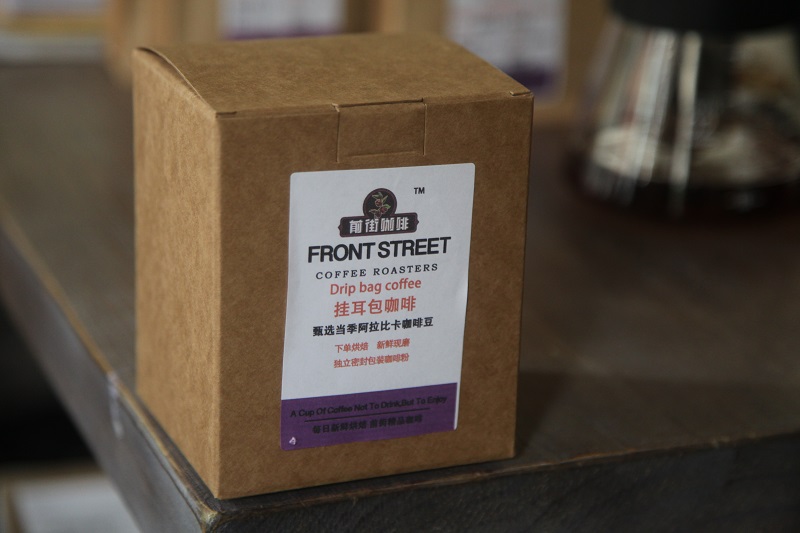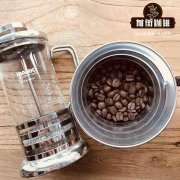Latin American coffee brand recommendation on how to brew Latin American coffee beans

Professional coffee knowledge exchange more coffee bean information please follow the coffee workshop (Wechat official account cafe_style)
The flavor characteristics of Latin American coffee beans: balanced, moderately sour and mellow
Central and South America is the largest coffee producing area in the world, and there are countless boutique coffee here. Take Colombia, Guatemala or Brazil as an example, good coffee is enough to make people dazzling. What is the resource advantage that makes Central and South America so good?
In 1721, French naval officer Gabriel Mathieu de Clieu went through difficulties and obstacles to bring the first coffee sapling from Africa to the Latin American island of Martinique, which was the origin of coffee cultivation in Latin America. Because France was under the Bourbon dynasty, Arabica coffee grown in Latin America had another name, bourbon, which is now famous in the coffee industry. Bourbon is now an important branch of coffee in Arabica.
The overall flavor of Latin American coffee is famous for its balance, and all the flavors in Latin American coffee can be found in Latin American coffee. The widespread use of wet treatment of raw beans is also one of the characteristics of Latin American coffee, good processing also makes its beans larger and more uniform than African coffee, and the defect rate is lower.
Know the flavor of coffee beans before you buy them.
Coffee beans themselves will have obvious regional characteristics, before buying, understand the flavor of coffee beans, generally get a lot of information about coffee flavor from the label.
Coffee labels are like red wine labels.
The common contents are as follows:
(1) Coffee varieties
(2) Coffee name
(3) Grade
(4) producing areas
(5) name of manor or processing plant
(6) name of country
(7) date of baking
(8) description of flavor, etc.
Today's introduction
Introduction to the most popular flavor of Latin American coffee beans
■ Panama
An important reason for the unique quality of Panamanian coffee is its microclimate. Bordering Costa Rica and Colombia, Panama's east-west environment allows cold air to flow through the Central Mountains at more than 6500 feet, creating a very unique microclimate in the Boquete and Vol á n Candela regions, making it a major producer of Panamanian coffee. The land around this area is rich in nutrients, and these fertile soils provide perfect conditions for the growth of coffee, creating a large number of unique, high-quality coffee.
Panamanian caffeine is famous in the world, and the reason is that it is closely related to Panama's unique physical and geographical conditions. Moderate curry body, smooth taste, delicate acidity, well-balanced taste value, coupled with subtle flavors such as caramel, chocolate, citrus and jasmine.
[Panama]: Panama is a country in Central America.
[Boquete]: Pokuit is a famous coffee producing area, a town of Chiriqui in Riki province.
[Washed]: washing treatment, washing is to remove the peel, pulp, pectin, and then dry later; lead to a clean sink, soak in water for fermentation. Features: obvious acidity, good cleanliness, medium alcohol thickness, high stability.
[variety]: due to the historical reasons of the manor, in order to pursue yield at that time, the early rose summer varieties were mixed with the coffee trees of Kaddura and Kaduai, and the coffee farmers did not reclassify them in order to facilitate picking. Instead, the three varieties were directly mixed. Rosa geisha, Kaddura Caturra and Kaduai Catuai are varieties of coffee beans.
[SHB]: very hard beans, Strictly Hard Bean (SHB), at 1600-1700 meters above sea level, coffee beans with high hardness at high altitude. The reason is that coffee beans have many nutrients, long fruit growth cycle, high density and high temperature roasting resistance. Beans are hard.
■ Guatemala
The central region of Guatemala is home to world-famous coffee with excellent flavor. Most of the coffee beans here have charcoal flavor and cocoa flavor, but their acidity is slightly stronger.
These are the most familiar coffee beans in Japan, and the first place of origin is in San M á rquez, which is close to the mountains of Mexico. The second place of production is Caesar Denango, who is difficult to make. Other brothers and gangs and Antigua are also very famous. Slightly sour, mellow and smooth, it is the best material for mixed coffee. The classification is divided into seven grades according to the elevation. The higher the origin, the more mellow the coffee beans are, while the coffee beans from the lower areas are of lower quality.
The characteristics of ● taste: bitter and fragrant, good taste.
[Guatemala]: Guatemala\ Guatemala is a Latin American country
[El injento]: Incht Manor, the world's top coffee house, Incht Manor is located on the Vivette South Fruit Plateau, a famous producing area of Guatemala. Since the Aguirre family began to grow coffee in 1900, the name of the manor "Injerto" is taken from the name of a local fruit, Incht Manor.
[Pandora Fatima]: bid for Incht Manor to specially play the "BEST Incht" series, which is from Pandora, the batch that won the COE championship.
[Pakamara]: a variety of coffee that is a hybrid of Pacas Pacas (a sudden variant of the bourbon species) and giant bean Maragogype (elephant bean) found in El Salvador in the 1950s.
[Washed]: washing treatment, washing is to remove the peel, pulp, pectin, and then dry later; lead to a clean sink, soak in water for fermentation. Features: obvious acidity, good cleanliness, medium alcohol thickness, high stability.
Brazil (South America)
The largest coffee producer, which accounts for 1/3 of the world's coffee consumption, accounts for 1/3 of the world's coffee consumption and has a place in the global coffee market, although Brazil faces several times more natural disasters than other regions. but its acreage is enough to make up for it.
There are many kinds of coffee here, but its industrial policy is large and cheap, so there is not much premium coffee, but it is a good choice for mixing other coffees.
One of the most famous is Sandos Coffee, which tastes mellow and neutral. It can be boiled directly or mixed with other kinds of coffee beans to form a comprehensive coffee. It is also a good choice.
Other kinds of Brazilian coffee, such as Rio and Parana, can be produced in large quantities because they do not need too much care. Although the taste is rough, it is a kind of high-quality and inexpensive coffee, which has its own standards because it is distributed all over the country and varies in quality (NO.2-NO.8 according to the number of sundries, NO.13--NO.19 according to the size of beans, and six grades according to taste). Almost all Arabica varieties are of good quality and stable in price. The most famous one is "Brazil Santos", which has been a necessity of blended coffee and is familiar to the public since ancient times. Recently, the "Guilma Cup" is also highly rated.
The characteristics of ● taste: mild, bitter medium, soft flavor.
[Brazil]: Brazil ranks first in coffee production in the world, with 21 states and 17 states producing coffee.
[Mogiana]: Morgiana, this area is very close to the south of Minas. Coffee is grown between shrubs, grasslands and other vegetation. There are many farming families in this area, some of which operate in the traditional way of large farms.
[Fazenda Rainha]: Queen's Manor, in 2011, the estate won the championship in the Brazilian COE competition. The four estates owned by the coffee family Carvalho Dias family and Carvalho Dias have won awards every year since the first Brazilian COE Competition in 1999, winning more than 12 times in the past 7 years, and even arranged for the champion, 9th, 11th and so on in 2004.
[COE]: extraordinary Cup, Cup of Excellence
[Natural]: it is the oldest and most primitive treatment of coffee beans. The harvested coffee cherries are placed on the terrace, and some are even directly exposed on the side of the road, receiving direct sunlight exposure (about 27-30 days). The moisture content is finished from 60% to only 12%. The characteristics of solarization method: the acidity is the lowest, the sweetness is obvious, the alcohol thickness is high, and the cleanliness is slightly lower.
[Yellow borubon]: yellow bourbon: it is mutated by a cross between a bourbon with red fruit and a variety of iron pickup with yellow fruit called "Amerelo de Botocatu". The fruit is sweet and soft, with obvious nutty flavor, balanced and supple acidity, and clean.
■ Costa Rica
The coffee beans produced at the high latitudes of Costa Rica are famous in the world, full-bodied, mild in taste, but extremely sour. The coffee beans here have been carefully processed, which is why they have high quality coffee.
The famous coffee is produced in the Central Plateau (Central Plateau), where the soil consists of successive layers of volcanic ash and dust.
The first-class fragrance is strong and sour, and it is highly valued. The place of production can be roughly divided into three areas: the Pacific coast, the Atlantic coast and the middle zone, and each is graded according to its elevation. All the coffee beans are quite large, especially the sour and fragrant coffee beans produced in the high areas of the Pacific coast are the first-class coffee beans, and there is a new brand of "Clarke Hill". The coffee beans of the lowlands along the Atlantic coast are sour rather than mellow and have nothing special.
The characteristics of ● taste: chocolate aroma and nutty flavor, moderate acidity and mellow flavor
[Costa Rica]: Costa Rica
[Tarrazu]: located in the volcanic belt of the low latitudes of Central America, the average latitude is the highest and the climate and soil conditions are excellent. The central plateau and mountain areas are about 800 to 2000 meters above sea level, which is very suitable for coffee growth, making Tarazhu the most famous and generally recognized coffee-producing area in Costa Rica.
[Canet]: Carnett Manor, located in the highest production area of Tarrazu coffee in Costa Rica, which is the most intensive area of fruit cultivation in Costa Rica. The owner of the manor mainly grows passion fruit, while the amount of coffee is very small, only in a special area.
[Raisin Honey Process]: raisin treatment, first drying the coffee fruit into a raisin state, and then peeling honey treatment fermentation, in the flavor will be more intense fermentation flavor, and pectin preservation is higher than other honey treatment, it is said that 100% pectin honey treatment really has a raisin flavor. This is a very sweet treatment, with the taste of white wine and balanced acidity, the flavor of fermentation will be more intense, and the preservation of pectin is higher than other honey treatments, a bit like "expensive rotten wine" sweet wine, honey, preserved apricot, raisins, peaches and other flavors.
[yellow Catuai] Huang Kaduai, a hybrid from Mundo Novo and Kaddura, was first bred by Brazil's [Contina Agricultural Research Institute] in 1949. Huang Kaduai has high disease resistance and is suitable for planting at high altitude. Both kinds of Kaduai have delicate and clean acid.
■ Honduras (Central America)
The washed coffee beans in the mountain areas are well received, while the coffee beans produced in the lowlands are of lower quality. Well-known producing areas are Santa Barra, Gracias, Komayagya in the east, and Chortika near Nicaragua. Coffee beans range in size from medium to large and are characterized by a mild taste. The quality products here are also marked up and divided into three grades.
The characteristics of ● taste: sour and slightly sweet.
[Honduras]: Honduras, one of the important countries of origin of coffee in Central America
[San Juancito] San Juan Theodore is a small village in central Honduras, 40 kilometers northeast of Tegucigalpa, the capital of Honduras. The coffee here is grown on mountains 1450-1550 meters above sea level and shaded by bananas, avocados, papayas and other fruit trees. Coffee farmers pick ripe fruits by hand during the harvest season, wash them and then dry them in the sun. The fermented water with coffee peel and pulp produced by water washing is collected and used as fertilizer for coffee trees.
[Lot]: batch
[Washes]: the washing method usually goes through soaking first. When soaking, the defective fruit will surface and can be discarded first. Then put the good fruit into the fruit peeling machine and peel off the peel with the rotating force of the machine. Peeled fruits are screened by machines to select fruits of high quality. Usually the bigger the fruit, the better the maturity. Coffee in Honduras is dried in the sun, so there is always a hint of fruit in the taste.
[Bourbon] bourbon coffee (French: Caf é Bourbon) is a kind of coffee produced by growing coffee trees in Arabica coffee bourbon cultivation. Bourbon coffee was originally grown in Reunion, also known as le Bourbon Island before 1789, with strong chocolate and nutty aromas.
Colombia (South America)
This is the second largest coffee industry after Brazil, and is also the leader in the Columbia Maird Group (Colombia, Tanzania, Kenya). In addition, there are Asa Maird, Anwar Snow Arabica, Robusta). The more famous producing areas, such as "Medellin", "Manizares", "Bogota" and "Armenia", etc., all the coffee beans cultivated are Anicabi species, which are quite rich in taste and stable in quality and price. The fried coffee beans are even bigger and more beautiful.
From low-grade products to high-grade products can be produced, some of which are rare good goods in the world, the taste is so mellow that people can't put it down.
The characteristics of ● taste: sour, bitter, sweet and strong, the color is like a good wine.
[Colombia]: Colombia is an important producer of commercial Arabica coffee
[Cauca]: Cauca province, the production season is from March to June, Cauca province, named after the Cauca River, Cauca River. Located in southwestern Colombia, it is an important producing area of Colombian boutique coffee together with Narino Department and Huila Department.
[Micro lot]: micro batch
[FNC]: Colombian Federation of Coffee producers, founded in 1927, is fully responsible for coffee-related matters, including coffee planting technology research, sales, marketing, quality standard construction, education and training for coffee farmers, etc.
[Caturra]: Kaddura, a natural variety of Arabica variety bourbon
Latin American coffee bean brand recommendation
All kinds of Latin American coffee beans baked in Qianjie Coffee are fully guaranteed in brand and quality. And more importantly, the performance-to-price ratio is extremely high, a pack of half a pound 227 grams, the price is only about 80-100 yuan. According to the calculation of 15 grams of powder per cup of coffee, a bag of coffee can make 15 cups of coffee, which costs only about 5 or 6 yuan per cup, which is recommended by conscience compared to the price sold in cafes for hundreds of yuan a cup.
Important Notice :
前街咖啡 FrontStreet Coffee has moved to new addredd:
FrontStreet Coffee Address: 315,Donghua East Road,GuangZhou
Tel:020 38364473
- Prev

What are the varieties and flavor characteristics of Latin American coffee beans? Latin American coffee bean price list 2020
Professional coffee knowledge exchange more coffee bean information Please pay attention to the coffee workshop (Wechat official account cafe_style) Central and South American flavor characteristics: balanced, moderately sour and mellow Central and South America is the world's largest coffee producing region, there are numerous boutique coffee here. French naval officer Gabriel Mathieu de Clieu experienced difficulties and dangers in 1721.
- Next

How to taste a cup of Latin American black coffee? How much is Latin American coffee?
Professional coffee knowledge exchange More coffee bean information Please pay attention to coffee workshop (Weixin Official Accounts cafe_style) Many students study here, always ask a question, why coffee introduction should start from black coffee, even from tasting single coffee as the basis; some students think black coffee learning is not important. Here's an explanation: because coffee learning is ultimately
Related
- Does Rose Summer choose Blue, Green or Red? Detailed explanation of Rose Summer Coffee plots and Classification in Panamanian Jade Manor
- What is the difference between the origin, producing area, processing plant, cooperative and manor of coffee beans?
- How fine does the espresso powder fit? how to grind the espresso?
- Sca coffee roasting degree color card coffee roasting degree 8 roasting color values what do you mean?
- The practice of lattes: how to make lattes at home
- Introduction to Indonesian Fine Coffee beans-- Java Coffee producing area of Indonesian Arabica Coffee
- How much will the flavor of light and medium roasted rose summer be expressed? What baking level is rose summer suitable for?
- Introduction to the characteristics of washing, sun-drying or wet-planing coffee commonly used in Mantenin, Indonesia
- Price characteristics of Arabica Coffee Bean Starbucks introduction to Manning Coffee Bean Taste producing area Variety Manor
- What is the authentic Yega flavor? What are the flavor characteristics of the really excellent Yejasuffi coffee beans?

